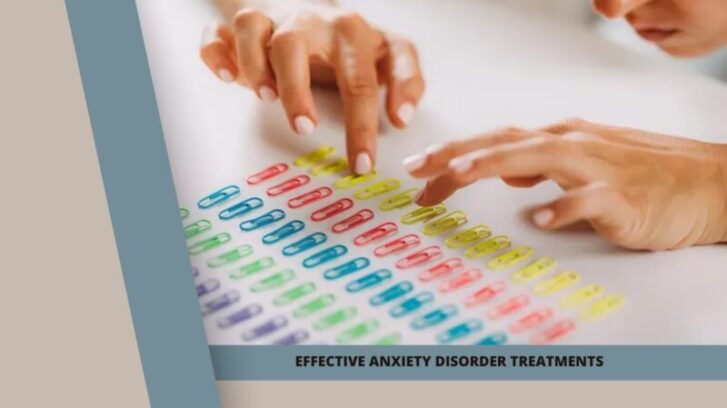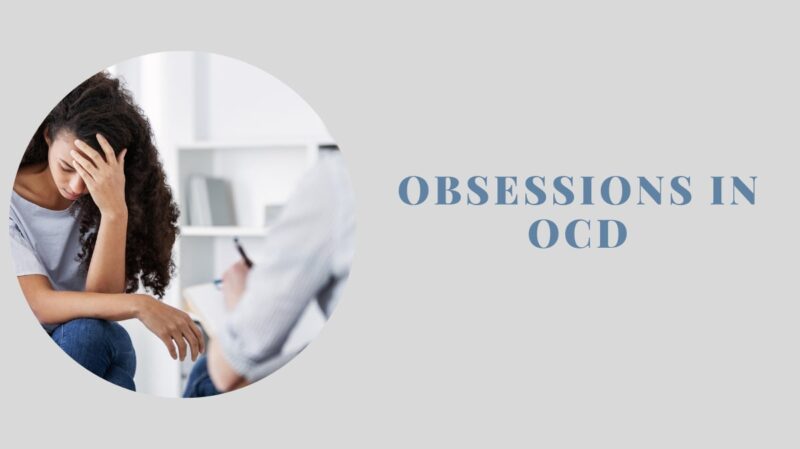It’s a serious disorder characterized by persistent, unwanted thoughts and fears (obsessions) that lead to repetitive behaviors (compulsions). These obsessions and compulsions can be incredibly intrusive, often causing significant distress and interfering with daily life.
OCD is more prevalent than you might think, affecting an estimated 1-3% of people worldwide. That means millions of people are grappling with this condition, often in silence. It’s not a rare condition, and it’s important that we understand it better.
Why is understanding OCD so important? Because knowledge is power. Recognizing the signs and symptoms of OCD is the first step towards seeking help. And with professiofnal help, those living with OCD can learn to manage their symptoms and significantly improve their quality of life.
In this article, we’ll delve into the world of OCD, exploring its signs, symptoms, and the impact it can have on an individual’s life. We’ll also look at the hope and potential for recovery that comes with treatment. Whether you’re living with OCD, know someone who is, or simply want to learn more, this article is for you.
Moreover, the nuances of OCD can vary significantly, with certain groups, such as women, experiencing unique challenges and manifestations of the disorder, highlighting the importance of tailored approaches in understanding and treatment.
Obsessions in OCD
Obsessions in OCD are persistent and unwanted thoughts, impulses, or images that cause distress or anxiety. These obsessions often intrude when you’re trying to think of or do other things. Common themes of obsessions include fear of contamination, a need for symmetry or exactness, or fear of harm coming to oneself or others.
These obsessions can significantly impact daily life and well-being. For example, a person with a contamination obsession may avoid public places to prevent exposure to germs, or someone with a symmetry obsession may need to arrange objects in a particular way, causing significant time delays and distress. The intrusive nature of these obsessions can make it difficult for individuals to focus on tasks or engage in regular activities.
Compulsions
Compulsions in OCD are repetitive behaviors or mental acts that a person feels driven to perform in response to an obsession. These compulsions are intended to prevent or reduce distress or prevent some dreaded event or situation. However, these compulsions are not connected in a realistic way to the event they’re meant to prevent, or they may be excessive. Common types of compulsions include checking (e.g., that the door is locked), counting, washing, or cleaning.
Compulsions are often performed in response to obsessions. For example, a person who fears contamination (obsession) may wash their hands repeatedly (compulsion). While these compulsions may provide temporary relief from the distress caused by the obsession, this relief is often short-lived, and the cycle of obsessions and compulsions continues.
The Vicious Cycle of OCD
Often creates a vicious cycle where obsessions trigger anxiety, leading to compulsions in an attempt to alleviate this anxiety. However, the relief provided by the compulsions is temporary, and the obsessions soon return, leading to increased anxiety and more compulsions. This cycle can be incredibly distressing and time-consuming, often causing significant impairment in a person’s life.
The impact of this cycle on a person’s mental health can be profound. It can lead to feelings of distress, guilt, and exhaustion. The constant cycle of obsessions and compulsions can also contribute to feelings of being out of control or trapped, further exacerbating feelings of anxiety and distress.
Diagnostic Criteria
- OCD is characterized by the presence of obsessions, compulsions, or both.
- These obsessions or compulsions are time-consuming (taking more than 1 hour per day).
- They cause significant distress or impairment in social, occupational, or other important areas of functioning.
- Diagnosis should always be made by a qualified mental health professional, such as a psychiatrist or psychologist.
- Professionals use a variety of assessment tools, including clinical interviews and symptom rating scales, to determine whether a person meets the criteria for OCD.
- While everyone may experience occasional intrusive thoughts or feel compelled to perform certain routines, it’s the degree to which these obsessions and compulsions interfere with daily life that distinguishes OCD from normal behavior.
Common Signs and Symptoms
- Obsessions are often characterized by intrusive and unwanted thoughts, images, or urges that cause significant anxiety or distress.
- Common obsessions can include fears of contamination, unwanted thoughts about harm or aggression, or intense worry about symmetry or order.
- Compulsions are repetitive behaviors or mental acts that an individual feels driven to perform in response to an obsession.
- These can include behaviors like excessive cleaning or washing, arranging items in a specific order, or repeatedly checking on things (like whether a door is locked).
- These behaviors are often performed not for pleasure or according to one’s own personal rules, but rather in an attempt to reduce the distress caused by the obsessions.
Subtypes of OCD
Obsessive-Compulsive Disorder (OCD) can manifest in various forms, often referred to as subtypes. These subtypes are characterized by the primary theme of the obsessions and compulsions. Here are some of the common subtypes:
- Contamination: This subtype is primarily concerned with germs or disease, leading to compulsive cleaning or washing. Individuals with this subtype may avoid public places or people to reduce the risk of contamination.
- Harm: Also known as ‘Pure-O’, this subtype involves intrusive thoughts about causing harm to oneself or others. These thoughts often lead to mental rituals to ‘cancel out’ the perceived threat.
- Symmetry and Orderliness: Individuals with this subtype have a strong need for things to be placed in a particular order or arranged in a symmetrical pattern. They may spend a lot of time arranging and rearranging items until it ‘feels right’.
- Hoarding OCD: This subtype involves the compulsive acquisition of items and difficulty discarding items, regardless of their actual value. Individuals with this subtype may live in cluttered homes and experience distress at the thought of throwing things away.
Each subtype has unique features and may influence the approach to treatment. For example, exposure and response prevention (ERP), a type of cognitive-behavioral therapy, may involve different types of exposures depending on the subtype.
Impact on Daily Life
It can have a profound impact on various aspects of an individual’s life, including work, relationships, and social activities. The time-consuming nature of obsessions and compulsions can interfere with productivity at work or school. The distress and anxiety caused by OCD can strain relationships and lead to social isolation.
Moreover, the emotional and psychological toll of living with can be significant. Individuals with OCD often experience high levels of stress, anxiety, and depression. However, with appropriate coping mechanisms and strategies, it’s possible to manage these challenges and lead a fulfilling life.
Co-occurring Conditions
OCD often doesn’t occur in isolation. It’s common for individuals with OCD to also have other mental health conditions, such as anxiety disorders, depression, and tic disorders. These conditions can complicate the presentation and treatment, making it crucial to conduct a comprehensive assessment and provide an integrated approach to treatment.
Understanding the complex relationship between OCD and other disorders is essential for effective treatment planning. For example, treating depression in a person with OCD may help to reduce symptoms and improve overall functioning.
Seeking Help: Diagnosis and Treatment
Early detection and intervention for OCD are crucial for improving outcomes. If you or someone you know is experiencing symptoms, the first step is to seek a professional diagnosis and evaluation. This typically involves a comprehensive assessment by a mental health professional who is experienced in treating.
There are several evidence-based treatments for OCD, including cognitive-behavioral therapy (CBT) and medication. CBT, and specifically a type of CBT known as exposure and response prevention (ERP), is considered the gold standard treatment for OCD. Certain types of medication, such as selective serotonin reuptake inhibitors (SSRIs), can also be effective in managing symptoms.
Living with OCD: Self-Care and Coping Strategies
Living with OCD can be challenging, but there are several self-care practices and coping strategies that can help manage symptoms. Regular physical activity, a balanced diet, and adequate sleep can all contribute to better mental health. Mindfulness and relaxation techniques can also help reduce anxiety and improve overall well-being.
Developing healthy coping strategies is also crucial. This might involve learning to tolerate the discomfort of obsessions without resorting to compulsions, or finding healthy distractions when obsessions become overwhelming. Support networks, including friends, family, and support groups, can also provide valuable emotional support and practical advice.
Supporting Loved Ones
OCD doesn’t just affect the individual with the disorder—it also impacts their loved ones. Understanding the nature of OCD and the challenges it presents can help family and friends provide effective support. This might involve learning about OCD, being patient and empathetic, and encouraging the person to seek professional help.
Supporting a loved one with OCD also means taking care of your own mental health. It’s important to set boundaries, seek support for yourself, and remember that you can’t ‘fix’ your loved one’s —it’s a condition that requires professional treatment.
Hope and Recovery
While OCD is a chronic condition, it’s important to remember that there is hope for recovery. Many individuals with OCD are able to manage their symptoms and improve their quality of life through treatment. There are countless stories of individuals who have successfully navigated the challenges and gone on to lead fulfilling, productive lives.
Recovery doesn’t necessarily mean the complete absence of obsessions or compulsions, but rather learning to manage symptoms in a way that they no longer interfere with daily life. With the right treatment and support, individuals can regain control over their lives and look forward to a future filled with possibilities.
In conclusion, OCD is a complex disorder that can significantly impact an individual’s life. However, with understanding, professional help, and effective coping strategies, it’s possible to manage symptoms and lead a fulfilling life. If you or someone you know is struggling, remember that help is available, and recovery is possible.















